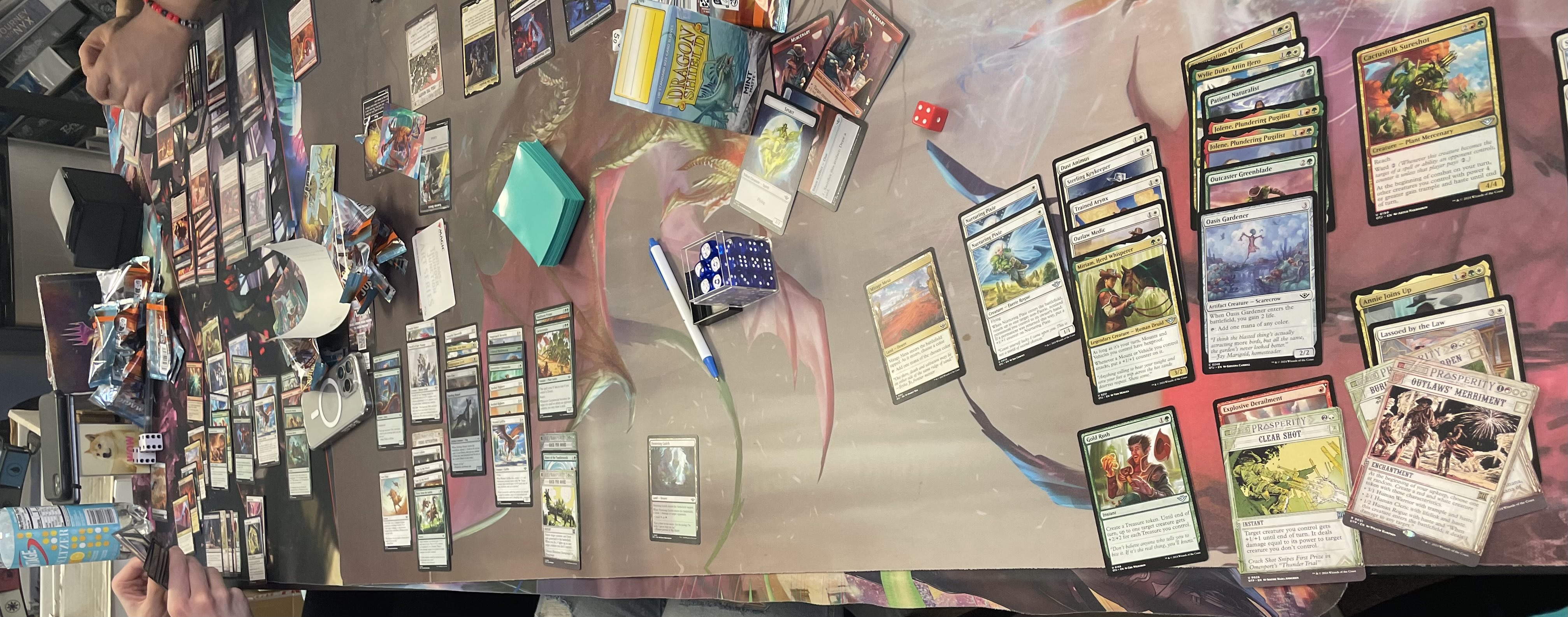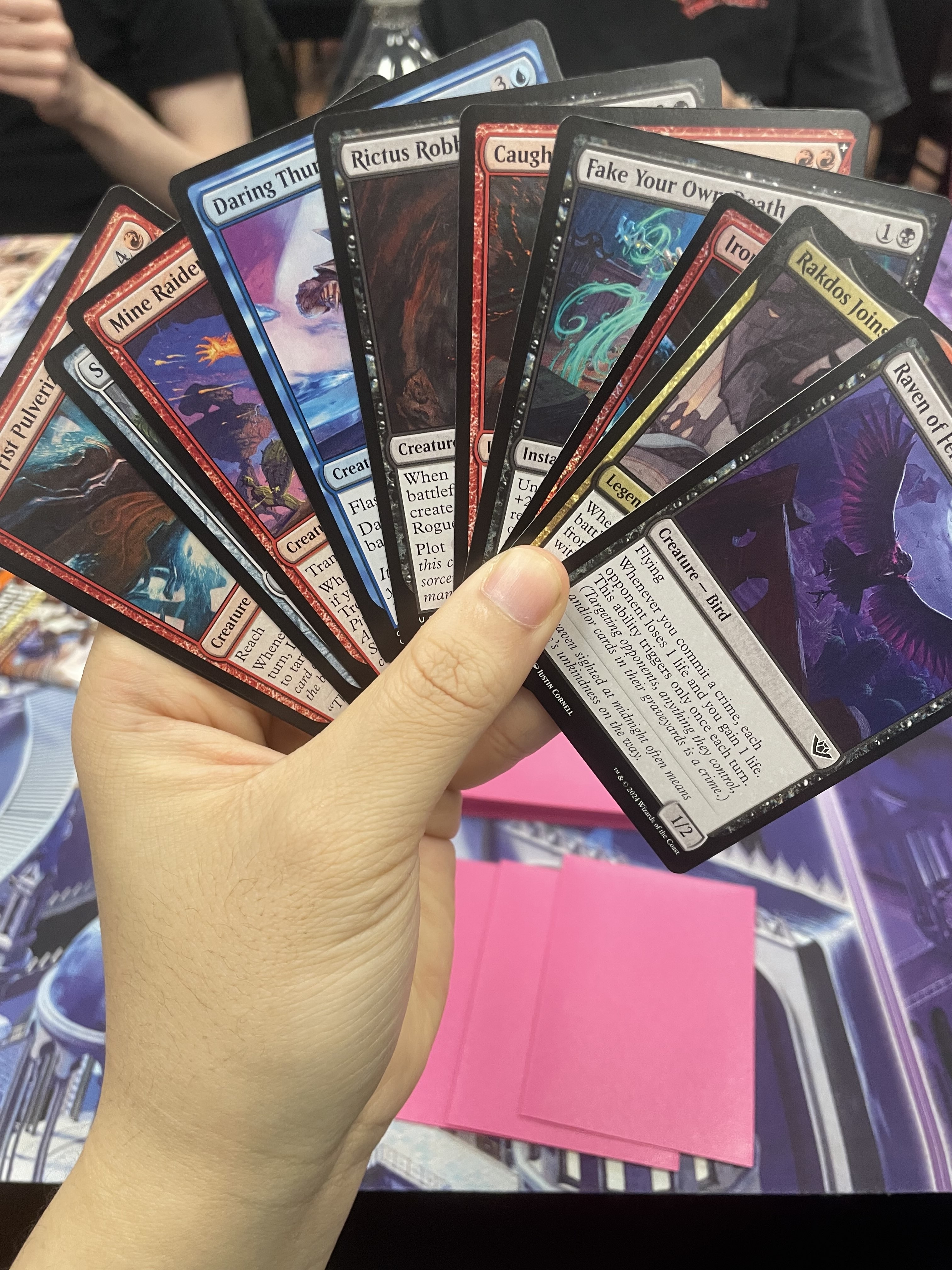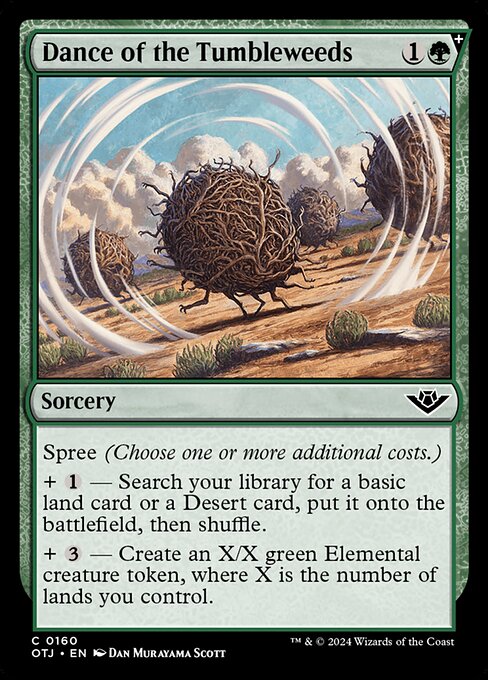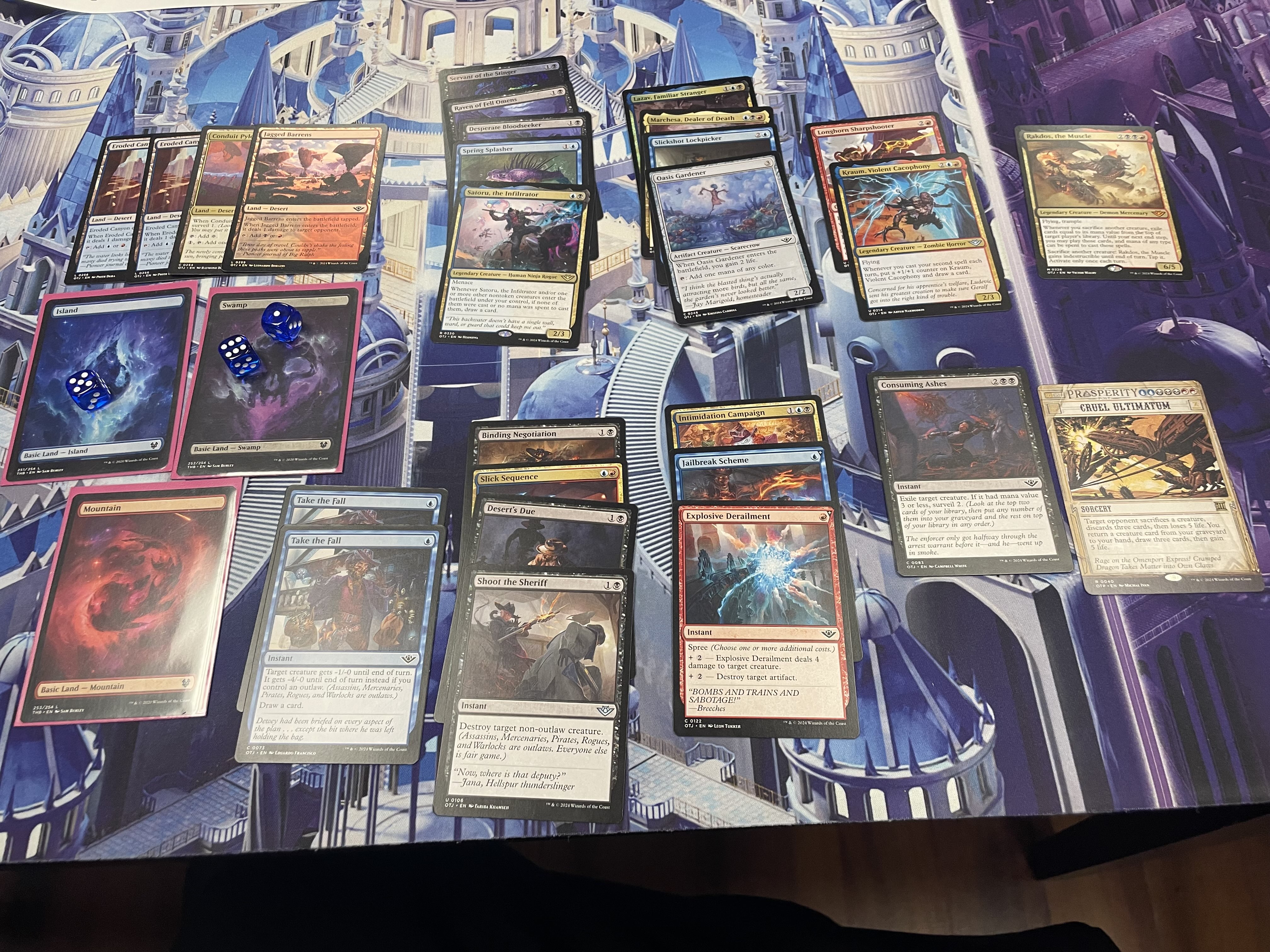Balancing Drafts in Imbalanced Formats: OTJ Green
04/15/2024
In preparation for the PT, I've drafted a full 9 drafts already, and throughout those drafts one thing has been pretty clear: green is far and away the best color in the set.
I might even go so far as to say that green is the best we've seen a color be in my time of drafting - there have been other sets with color imbalance certainly, but nothing standing out positively to the degree that green does here. I think it's better here than white in SNC, blue in MID, and black in THB.
Of course, 9 drafts in this is still way too early to be certain about a statement like that. But it just feels like green is both the deepest color by far AND the most rawly powerful, while also having access to the most fixing for splashing the plethora of strong bombs in the set.
So how should this affect your draft? Should you just force green? Should you let others fight over it?
Part 1: To Force or To Avoid?
Play Booster Variance
One of the biggest things is that green is just extremely deep this set. It can easily support half of the pod - in one of my practice drafts this weekend we had five green drafters (though not all the decks were good of course), three of which (me and the two other PT players there) were sat next to eachother.

the triple threat of green decks - my GW deck in the rightmost seat, passing to N on a GW deck and then BT on a Jund deck
Part of this was just that the packs skewed green in a way only Play Boosters could make happen. In pack 2, BT opened two green bombs (
Railway Brawler and Colossal Rattlewurm), took the Brawler, and then passed the Rattlewurm to N. Then in pack 3, N opened two even bigger bombs ( Vaultborn Tyrant and Terror of the Peaks), took the Tyrant, and passed Terror to BT.So both of them were cutting each other, but there was still way more than enough to build good decks besides. I was even in the mix taking green cards, but it felt like every pack just had three good green cards.
Obviously, that was just an anecdotal situation. But Play Boosters meaningfully make this a lot more likely - there's just a larger range of what a pack can contain now. Here's another anecdotal example from another draft I did that day, where I was in Grixis and saw this pack P2P5:

classic P2P5
Notably only four cards are missing: one bonus sheet card, one land, one uncommon, and one common. And yet with only one common missing, there's two colors completely missing.
And even beyond the fact that the collation is no longer as guaranteed, the fact that there's fewer commons and more individual slots means that the packs you can see are just higher variance.
So with play boosters, sometimes the draft will just have a glut of a certain color like that. It's certainly going to be more common than before Play Boosters - and it wasn't impossible before either.
So what does this mean for us in drafting?
Don't Overlevel Yourself
It can be tempting to try to "one up" the competition, especially as the format progresses. You might reason: green is so good, and once it becomes obvious then everyone will be trying to get on that train, so maybe it's better to avoid that entirely and pickup on other colors that people aren't fighting for.
The problem with that is that sometimes, even with everyone fighting over it, the green cards will still be better than the cards of other colors. You never know exactly what will happen before you sit down to draft, so it's dangerous to have inflexible strategies going in!
Of course, this applies the other way as well - I don't think it's correct to hard force green either. Just as your table could support 5 green drafters, it could also end up barely supporting 2.
So if you shouldn't completely avoid green, and you shouldn't force it, what should you do instead?
Take the Good Cards
I know, I know. I say this a lot. But at the end of the day, really that's just what you should do! When you get rewarded for drafting green, it's not because of some abstract cause of it being the "best color" - it just because it has a lot of strong cards. The reason to draft green is just the same as the reason to draft anything - you want to put good cards in your deck, not bad cards.
When what cards and colors you see can be wildly different from draft to draft, it's especially important to fall back on these fundamentals. Trying to set any hard-and-fast rule or strong tendency is always going to have its flaws - being more flexible is going to do you better in the long run.
So if you see a strong green card, you should probably take it! And if the strongest card in the pack isn't green (maybe
Marchesa, Dealer of Death vs Throw from the Saddle) - well, you should probably take the stronger card still.Amusingly, this can end up looking quite like you forcing green - after all, a lot of the time the strongest card in the pack will be green! And I think as I got more experienced with the set, my raw card evaluations of various nongreen cards in the set went down just because they felt less supported - not directly because they weren't green, but tying into the same issues that cause green's dominance in the set.
In the 9 drafts I did over the weekend, 7 of them had green as a main color. And I was following my own advice here, in taking the strong cards and not forcing or avoiding anything (which I especially wanted to do to learn the format) - it just so happened that this usually meant taking green cards. And 7/9 drafts looks kind of like forcing a color! The difference is just in the methodology.
Part 2: Splashing
When it comes to color imbalance, the interesting questions are always when two cards are close in power level, with a slightly better card in a worse color. Then, maybe you can justify taking a small hit in power as a nod to some color bias.
Maybe you take
Throw from the Saddle over a slightly better removal spell like Lassoed by the Law, just because you expect that it's more likely to make your deck. A 58% winrate card that makes your deck 80% of the time might be better than a 60% winrate card that makes your deck 40% of the time.But... even that isn't quite right, partially because green is so good at splashing this set.
Going back to the above example: instead of taking Throw, I could just take Lassoed, and still put it in my green decks. It's only single-pipped, so it isn't that hard. It's not that hard to occasionally splash with the common fixing deserts that every color has access to, and green has quite a few fixers on top of that.
At first glance you might think I'm arguing for taking fewer green cards - the example I gave was literally about taking a slightly better white card over a worse green card. But in fact I'm kind of arguing the opposite: because green is so good at splashing, you can essentially take green cards in almost all of your drafts!
This is in fact part of why I had 7 out of my 9 drafts be green. In at least 4 different drafts I started with good cards that weren't in green (one with a
Terror of the Peaks, one with an Archangel of Tithes, one with two copies of Shepherd of the Clouds, one with just good removal of various colors), where I was thinking in the early packs that maybe this time, this time I wouldn't be green - but then ended up sliding into green anyways.Because of the depth and the splashing, it's just so easy to pair everything with green. Even in the draft routes I often take - where I start deep in one color and have a few cards here and there of other colors - it's quite beneficial to also go into green and end up pairing that original color with green and splashing the extra good cards of other colors!

some really good common fixing
The biggest single overperformer as a card for me in this regard was Dance of the Tumbleweeds. In my set review with Julian, I thought that this card was going to be mediocre - after all,
Leyline Invocation was mediocre in Strixhaven, and 3 mana ramp spells have generally been mediocre when they only have small upside - how good could the upside of a split card like Dance be?It turns out I highly underestimated the modality of this card and the strength of the fixing. The creature it makes is just kind of huge, and the modality means the card is never dead, which is quite powerful in limited. And the fact that you get to put a 3 mana ramp spell in your deck and be happy about it just means that green fixing ends up being extremely easy!
And Dance isn't the only fixer, not even close -
Patient Naturalist and Outcaster Greenblade are also both excellent, and Hardbristle Bandit is serviceable as well.Conclusion: Recognizing Power
In the end, I think the most important thing in this set is to do something powerful.
Green gets this pretty easily - you just have
large creatures at common that can take over and win a game. But this doesn't mean that other colors can't do anything powerful! You just need to work a bit harder.The first non-green deck I drafted was one where I first-picked Marchesa, and ended up with quite a busted Grixis deck. In fact, I think it was actually the best deck I drafted the whole weekend.

high quality grixis
But part of that was just that it took other colors being just that open with that many good cards before I was willing to not be green. I think I had probably one of the best Grixis drafts you could ever have, and it still was only somewhat better than what I felt were average green drafts.
Still, it was important to recognize that that's where the power was during my draft! And that's what you generally want to do, especially in bomby formats like this one - figure out where the power is, and follow that.
Avoiding green isn't going to get you there of course - there's just too much power there to ignore. But forcing it with blinders on will also close you off to too much power to be worth it.
All that it means for green to be the strongest color in the format is that, compared to other colors, it will more often be the source of your power. But in the end, you still have to take each draft by itself.
#FreePalestine | Consider donating to UNWRA or PCRF, supporting protesters locally, and educating yourself.
